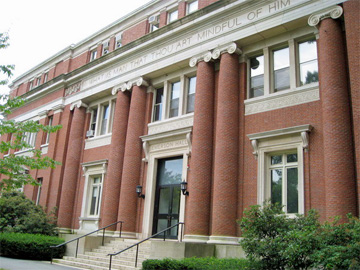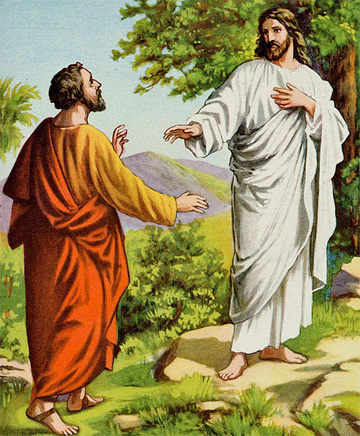In my last post I began to examine Jesus’ use of the self-designation “Son of Man.” I noted that although this was Jesus’ preferred title for himself, his followers have generally been confused by what Jesus meant when he called himself the “Son of Man.” Moreover, some of what he claimed for the Son of Man seems to be, on first glance, fantastic. According to Jesus, the time will come when the Son of Man will be glorified and enthroned in heaven, where he will execute judgment upon the nations. This “human being” seems to take on the attributes of God himself. Where did Jesus get these ideas about the Son of Man?
It should come as no surprise that Jesus’ picture of the glorious Son of Man reflects a portion of his Jewish background. In fact, his description of the Son of Man can be traced back to a crucial text from the Old Testament book of Daniel. One night Daniel had a terrifying dream about the future of human history. In his dream, he saw four dreadful beasts who rule over the earth and devour people through their political oppression. But, in the midst of the beasts, God appeared as “the Ancient One” who existed even before time itself (Daniel 7:9). He sat upon his throne in the presence of his heavenly court, judging the four beasts and taking away their power. Then, unexpectedly, a new figure appeared:
As I watched in the night visions, I saw one like a human being coming with the clouds of heaven. And he came to the Ancient One and was presented before him. To him was given dominion and glory and kingship, that all peoples, nations, and languages should serve him. His dominion is an everlasting dominion that shall not pass away, and his kingship is one that shall never be destroyed (Dan 7:13-14).
In the original Aramaic of Daniel, the phrase “one like a human being” reads literally, “one like a son of man” (kebar ‘enash). This human figure rose from earth into the sky to appear in God’s presence where he received the kingdom of God. The dominion of this human being is unlike any human reign because it “is an everlasting dominion that shall not pass away” (Dan 7:14).
While still dreaming, Daniel approached one of the divine attendants, asking for the interpretation of the dream. He learned that the four beasts represent four kingdoms that shall dominate the earth. But when the Ancient One finally executes judgment upon the all four beasts, the saints will be exonerated. In fact,
The kingship and dominion and the greatness of the kingdoms under the whole heaven shall be given to the people of the holy ones of the Most High; their kingdom shall be an everlasting kingdom, and all dominions shall serve and obey them (Dan 7:27).
Therefore, the “one like a son of man” represents the faithful people of God who endure oppression and ultimately share in God’s rule over the earth.
Daniel’s vision of the Son of Man didn’t dominate Jewish eschatological speculation in the time of Jesus, but it was picked up by a number of writers. In a writing known as 1 Enoch, the Son of Man executes divine judgment on earth by removing kings from their thrones and crushing the teeth of sinners (1 Enoch 46: 4-6). In another Jewish writing called 4 Ezra (or 2 Esdras), a human figure emerges from the sea and flies over the earth. When multitudes of humanity wage war against this human figure, he sends forth a stream of fire from his mouth that completely consumes his enemies. Thereafter, he gathers the faithful remnant of God’s people to dwell together in peace (4 Ezra 13:1-57). (Photo: Superman, from a 1942 movie now in the public domain.)
In my book Jesus Revealed I compared the Son of Man in intertestamental Jewish speculation to the cartoon character Superman. Like the Man of Steel, the Son of Man has superhuman powers which he uses to defend “truth, justice, and the divine way,” which also happens to be the way of faithful Israel.
Surely Jesus’ description of the Son of Man derives, in part, from Daniel 7. It may well have been influenced by later Jewish visions as well. Consider once again the passages I cited in my last post:
When the Son of Man comes in his glory, and all the angels with him, then he will sit on the throne of his glory. All the nations will be gathered before him, and he will separate people one from another as a shepherd separates the sheep from the goats (Matt 25:31-32).
Then the sign of the Son of Man will appear in heaven, and then all the tribes of the earth will mourn, and they will see “the Son of Man coming on the clouds of heaven” with power and great glory (Matt 24:30).
Yet this is not the whole story, because Jesus had other things to say about the Son of Man, things that appeared to contradict everything his Jewish contemporaries believed. To the unexpected and unsettling sayings of Jesus about the Son of Man I’ll turn in my next post.

